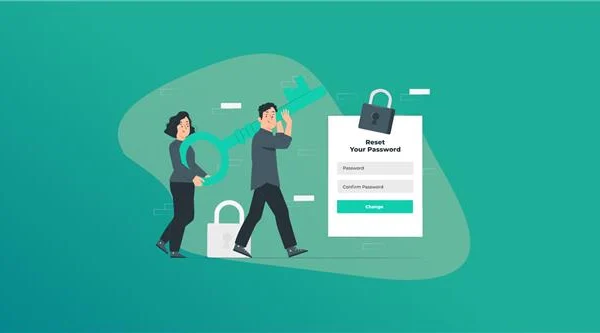
Cybersecurity is evolving at a rate that is unprecedented. Every day, we hear new names, new technologies, strategies, and updates. One such security update is a hashed password. It is a great initiative that companies take to protect their customers’ security on the website.
Undoubtedly, password hashing is a great security trick, but many users are still unaware of this concept. If you are also one of those who don’t know much about a hashed password, then this blog can be a good information source for you.
In this blog, I will tell you everything from what a hashed password is to how it works.
Additionally, I will also explain if a hashed password can ever be cracked. So, make sure to read this blog to the end to find all the details.
What Is a Hashed Password?
Let’s keep things simple for the beginners out there. At its simplest, a hashed password is a copied version of your original password that you have just saved on a website.
In the hashing process, your original password is translated into a new set of characters using a special mathematical formula known as the hash function.
When your password gets completely transformed, your original password is no longer stored; instead, its hashed version is stored on the website.
For Example:
- You type: ILoveMyDog123
- Website stores: 3s4j9e7a9c0d8d1f (just a made-up example)
You can’t turn 3s4j9e7a9c0d8d1f back into “ILoveMyDog123.” It’s a one-way code. It only ever works one direction—from password to scrambled version. So, a hashed password is simply your actual password converted into a jumbled, unreadable form that can’t be decrypted.
This new form (the hash) appears to be a random jumble of letters and numbers, but it’s always the same output from the same input, if the same hashing process is applied.
Hashed Password- How Does It Work?
When you set a password, the system processes it using a hash function (such as SHA-256). It saves only the hash, not your original password. When you sign in later, your typed password is hashed once again and compared with the saved hash.
To put it another way, when you log into a website, you enter your password, e.g., “ILoveMyDog123.” However, the website doesn’t store it, but passes it through a hash function. This function changes your original password into a mixed code (Hash) that seems like a random combination of letters and numbers, it looks something like “3s4j9e7a9c0d8d1f …”
This hashed version of your password is now stored on a website’s database, instead of your original password. So, if, unfortunately, any hacker ever exploits the system, he cannot find your password (ILoveMyDog123). The hacker will only find a hash, a combination of numbers and letters. The most praiseworthy thing about a hash is that it’s one-way. It means that once your password is converted into a hash, no one can reverse it to find your actual password, not even the website itself.
Additionally, when you access the website and log in again, the website will not search for your actual password ILoveMyDog123; it will copy your entered text, hash it using the same hash function, and create a second hash. If the second hash is the same as the first, the website will know that you have entered the right password, without actually seeing the real password.
So, basically, a hashed password is simply your actual password all jumbled up so it can’t be reversed. It assists websites in verifying your password without having any idea what it is.
Why is a Hashed Password Important These Days?
Today, everyone uses passwords for everything—emails, online shopping, social media, banking, and so on. Which means there are millions of saved passwords stored on websites and apps across the internet.
If someone hacks a website and that has stored your actual password (such as “ILoveMyDog123“), the hacker is able to read it and use it to enter all your other accounts as well. That’s quite risky.
But if the site only stores a hashed copy of your password (such as a mix code), then even if a hacker takes the database, they’ll only be able to see the mixed codes, not your actual password. They can’t log in on your behalf unless they can guess the precise password that will produce the same hash (which is really difficult to do).
Hashing also keeps websites more secure by not storing any actual password information. So in case something is compromised, your password is considerably less likely to be stolen or used incorrectly.
What Is Password Salting?
Password salting is another process that takes place right before the hashing. This gives some added security to your hashed password. It means that before hashing a password, the system adds some additional text prior to hashing.
For example, instead of just hashing “ILoveMyDog123,” the system might first turn it into “ILoveMyDog123Xy9$z” and then hash that. This creates a unique result. Even if two people have the same password, their salted versions will look completely different. Salting helps protect passwords from hackers who use common patterns or guesswork to break into accounts.
What is the Best way to Protect Your Online Accounts Then?
One of the strongest ways to protect your online accounts is by utilizing a password manager! Here’s why,
- A password manager is a software that creates unique and strong passwords and manages them for all the websites without having you to memorize them. All you need is a single master password to open the manager and access your other passwords.
- Authentic password managers, just like FastestPass, not only create strong passwords, but also make them hard to crack. Additionally, it keeps them safe and secure with strong, encrypted wallets.
Other Useful Tips to Safeguard Your Accounts
- Always enable 2FA (two-factor authentication). It enhances your security by sending a code to your phone or email to verify your access.
- Do not use the same password for all the websites you visit.
- Also, keep your software and devices up to date to protect against security vulnerabilities.
Lastly, do remember that a password manager combined with 2FA is a smart, easy, and powerful way to keep your online accounts secure.
Conclusion
Password hashing is a modern solution for websites to protect their visitors. It is the best way to hide users passwords from hackers. Besides password hashing, it is also crucial for users to pay attention to their online security. The best way to keep your digital security intact is by following proper protocols, including enabling two-factor authentication, using multiple passwords for different accounts, and keep all your devices and software updated to avoid security vulnerabilities.
Generate passkeys, store them in vaults, and safeguard sensitive data! Receive the latest updates, trending posts, new package deals,and more from FastestPass via our email newsletter.
By subscribing to FastestPass, you agree to receive the latest cybersecurity news, tips, product updates, and admin resources. You also agree to FastestPass' Privacy Policy.
Secure and Create Stronger Passwords Now!
Subscribe to Our Newsletter










